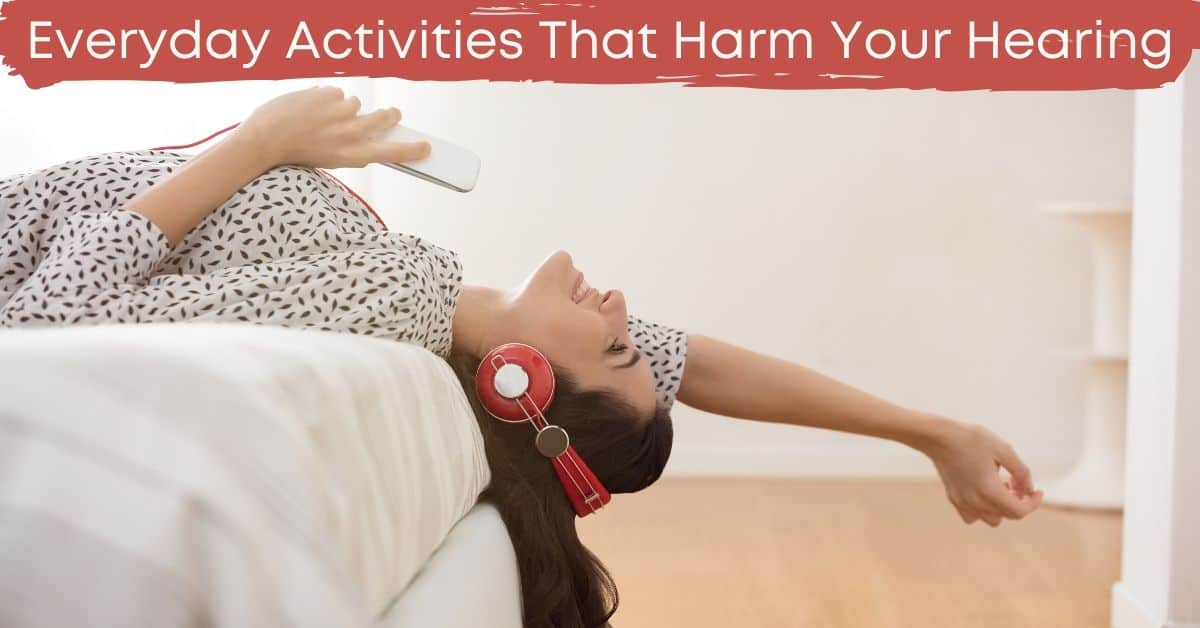
The world is a diverse soundscape full of music, birds chirping and wind blowing through the trees. Sounds can be a delightful and relaxing part of living but there is such a thing as too much of a good thing. Some sounds can be exasperating. Many of us deal with the sounds of traffic, construction and noisy appliances everyday. As technology continues to develop it can be hard to get a break from the sounds around us. This is a serious problem, not to be ignored as excessive noise can lead to permanent hearing loss.
Noise Induced Hearing Loss
The National Institutes of Health estimates people between the ages of 20 and 69, 17%, or 26 million have permanently damaged their hearing due to noise induced hearing loss. This makes hearing loss a condition not only for the elderly. Noise level is measured decibels. When a sound is above 85 decibels it can cause damage to the tiny hairs and nerves in your inner ears that transmit sound to your brain. It is not only the level of the sound that causes damage but the length of exposure. While it is commonly understood that people are put at risk for hearing damage in work place conditions, many overlook the everyday activities that may inflict damage on their ears.
Common Sources of Damaging Noise
Do you know what sounds breach 85 decibels? If you aren’t sure there are apps now on most smart devices that can measure the decibel level of an environment. Even if you do not have a smart device handy, a good way to gage the level of noise in a space is this; if you have to yell to be heard over noise you are putting your hearing at risk.
Personal Media Devices
It seems like everyone is wearing headphones these days. People love to blast their favorite music or podcasts while working out, riding the train or at work. It is important to understand safe listening practices so you do not damage your ears. Not only is the volume a huge risk to your ears but the length of listening time. It is a safe practice to keep the volume turned to 60% capacity or lower and make sure to give your ears a break. While blasting music into your ears can be so fun, it’s not worth damaging your ears permanently.
Construction & Traffic
Most of us commute everyday and are exposed to the honking of horns, the rattling of engines and the racket of construction. While you have most likely become accustomed to this, many don’t understand that exposure to this level of noise pollution everyday can contribute to permanent hearing loss. Many of us can not avoid traffic and construction. This is when hearing protection comes in handy. Foam ear plugs can reduce sound from 10-30 decibels so you can still hear the world around you while dealing with decibels at a safe listening level daily.
Power Tools
Whether you are using them for a profession or a hobby, power tools can make significant noise, well past safe listening levels. While the Occupational Safety and Health Administration (OSHA) is strict on enforcing sound regulations in a work environment, those using tools at home may not realize how much damage they are inflicting on themselves. When mowing the lawn, blowing the leaves out of your lawn or working on a carpentry project it is important to wear ear protection. This ensures that your hearing stays healthy and intact. Sound reducing ear muffs work well for protecting your ears while still staying alert while operating potentially dangerous machinery.
Protect Your Hearing
Make sure you educate yourself on the decibel levels around you, especially for activities that seem especially loud. Ideally you can bring earplugs with you everywhere you go in case you are in an instance where you suspect your hearing could be put at risk. If you suspect you have a hearing loss, it’s a great idea to set up a hearing test, so you can know for sure the status of your hearing health. If you do have hearing loss Whisper Hearing Centers can help find a treatment to make sure you can hear your best.
